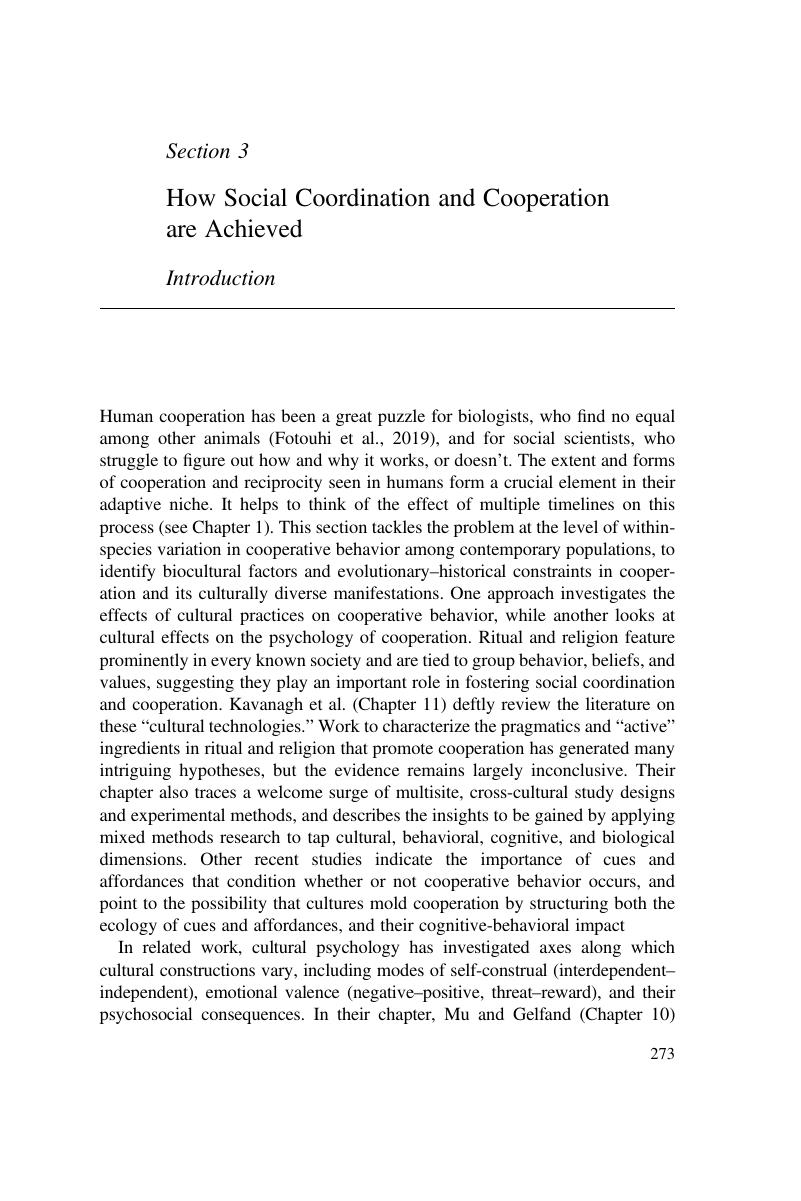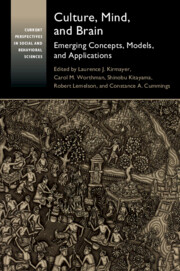Book contents
- Culture, Mind, and Brain
- Current Perspectives in Social and Behavioral Sciences
- Culture, Mind, and Brain
- Copyright page
- Dedication
- Epigraph
- Contents
- Figures
- Tables
- Contributors
- Preface
- Abbreviations
- 1 Introduction
- Part I Dynamics of Culture, Mind, and Brain
- Section 1 The Co-emergence of Culture, Mind, and Brain
- Section 2 The Situated Brain
- Section 3 How Social Coordination and Cooperation are Achieved
- Part II Applications
- Index
- References
Section 3 - How Social Coordination and Cooperation are Achieved
Introduction
from Part I - Dynamics of Culture, Mind, and Brain
Published online by Cambridge University Press: 18 September 2020
- Culture, Mind, and Brain
- Current Perspectives in Social and Behavioral Sciences
- Culture, Mind, and Brain
- Copyright page
- Dedication
- Epigraph
- Contents
- Figures
- Tables
- Contributors
- Preface
- Abbreviations
- 1 Introduction
- Part I Dynamics of Culture, Mind, and Brain
- Section 1 The Co-emergence of Culture, Mind, and Brain
- Section 2 The Situated Brain
- Section 3 How Social Coordination and Cooperation are Achieved
- Part II Applications
- Index
- References
Summary

- Type
- Chapter
- Information
- Culture, Mind, and BrainEmerging Concepts, Models, and Applications, pp. 273 - 276Publisher: Cambridge University PressPrint publication year: 2020



